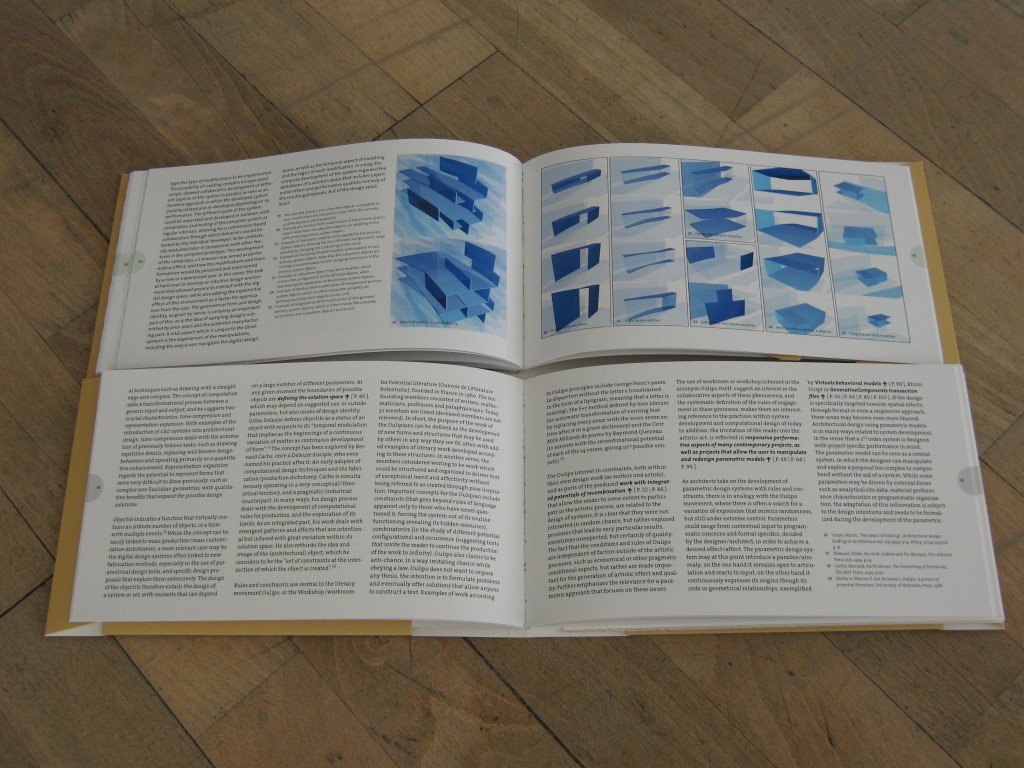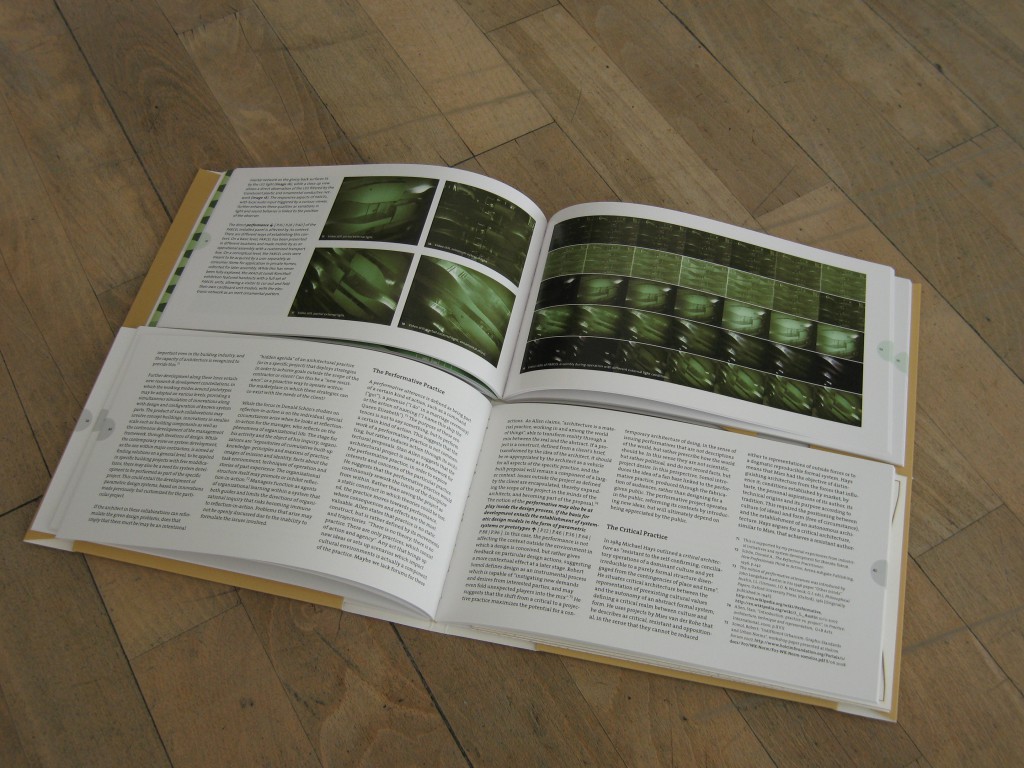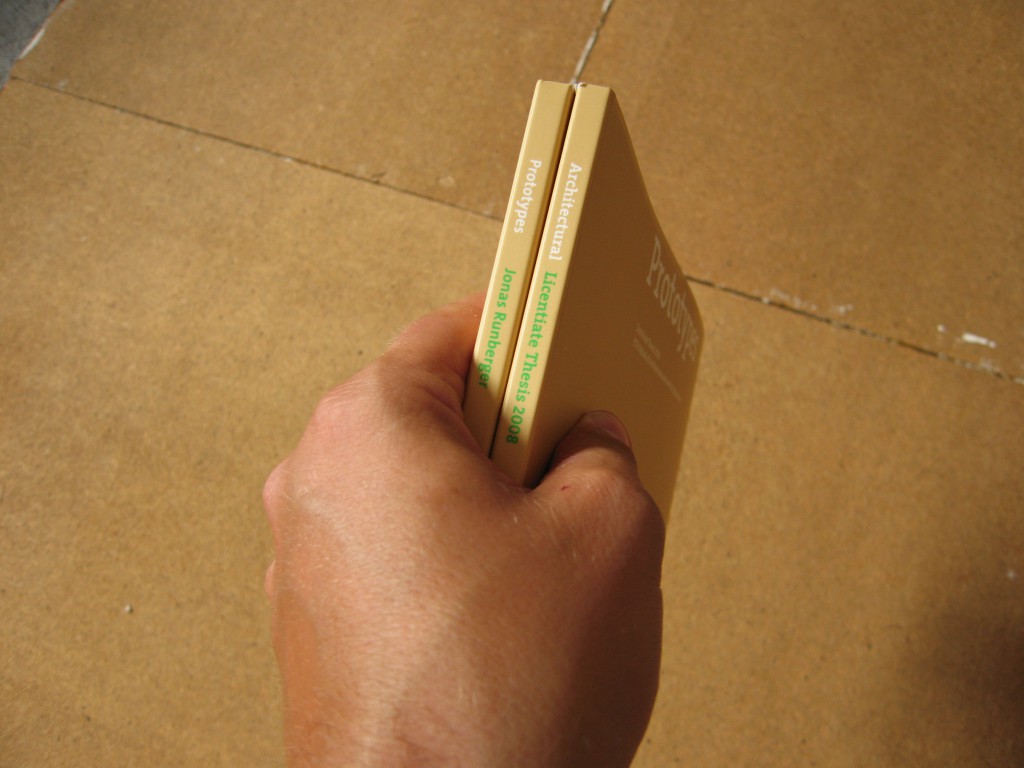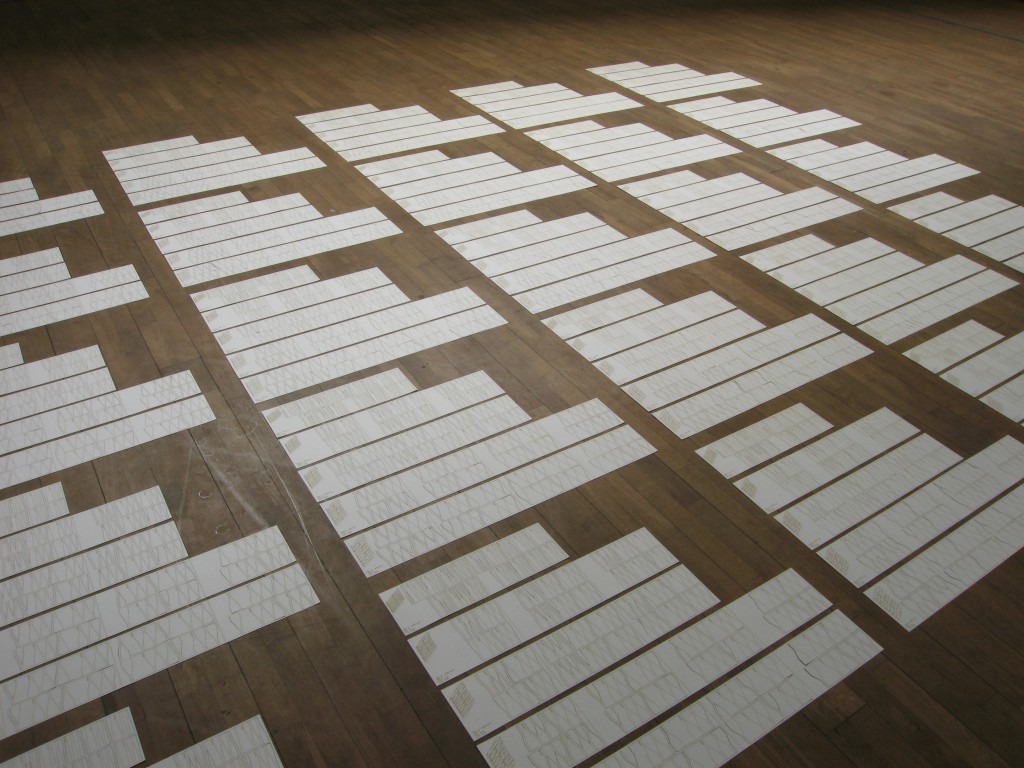
The licentiate thesis Architectural Prototypes: Modes of Design Development and Architectural Practice was defended at KTH School of Architecture in Stockholm on September 30th 2008.
Opponent: Michael Speaks, PhD, Dean College of Design, University of Kentucky
Main advisor: Professor Katja Tollmar Grillner, KTH School of Architecture.
Secondary advisors: Ulrika Karlsson and Tim Anstey (PhD), KTH School of Architecture
The licentiate thesis is divided into two parts; the Contexts book and the Projects book. The two books are intertwined through a system of references, and are meant to be read together. The Contexts book explores contemporary discourses within the field of digital and projective design and new forms of architectural practice. The Projects book is based in design projects developed by the Jonas Runberger, often in collaboration with other architects, and traces a discourse based on advanced parametric design methods and architectural effects.
The thesis can be read on-line here, with both books displayed as pdfs in an html frameset. If you have any problems accessing the material please try the two individual links to the two pdfs below. Please feel free to comment the material at the bottom of this page. The thesis is printed in a limited and numbered edition of 125. A small number of copies are available for sale, please contact jonas (at) runberger.net for more details.
Thesis Abstract
This licentiate thesis is design driven, partly based on case studies in the form of experimental design projects developed mainly within the research and design collective Krets. It constitutes the first half of a PhD project that studies new technologies and techniques within design processes and the production of architecture, especially in relation to collaborative models. Specific aspects of architectural design processes are formulated, tested and evaluated within this framework. Key elements within the design process are targeted, through their impact on social, cultural and technological aspects. The continuous tool for this investigation is the prototype, which operates as a base for collective work, a probe, a tool for communication and an archive. It is not necessarily a physical artifact, but can also exist as a system or a set of rules. It is important that the prototype becomes a protocol for communication between collaborating interests in the design process.
The thesis is divided into two parts; the Contexts book and the Projects book. The two books are intertwined through a system of references, and are meant to be read together. The Contexts book explores contemporary discourses within the field of digital and projective design and new forms of architectural practice through two articles. The Projects book is deploying selected parts of design processes from projects developed by the author in collaboration with other architects as well as student work from studios taught by the author, and traces a discourse based on advanced parametric design methods and architectural effects.
Keywords
architecture theory, design theory, prototype, performance, effect, affect, architectural design project, parametric model, design solution space, fabrication, production, industrial process, research by design, digital practice, projective practice, generative components, krets, parcel, splinegraft, urbantoys v.2, informed modularity,
architecture information
Graphic Design
The thesis design and format has been developed in collaboration with Ummocrono, where Nina Wollner has designed and produced the two books.
Links
link to both books set as pdfs in an html frameset
link to Contexts book pdf
link to Projects book pdf
link to abstract
link to thesis instruction
Sample Spreads





